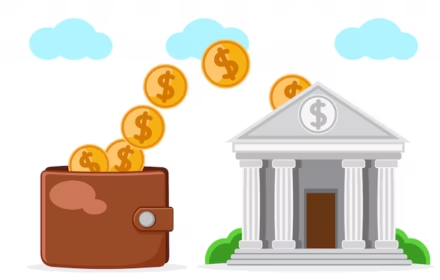Financial literacy has ceased to be the prerogative of the chosen few. Markets have become accessible, technologies understandable, and the minimum entry threshold symbolic. There is no longer a universal answer to the question of how much money one can invest. It all depends not on the amount of initial capital, but on the clarity of goals, readiness for risk, and understanding of mechanisms.
Minimum start: how much money is needed to start investing
First of all, let’s dispel the popular misconception: investments do not require millions. Today, brokerage platforms offer tools that allow you to start investing with a small amount — from 1000 to 5000 rubles. Automation technologies, fractional shares, low-entry funds, and no transaction fees have opened up the market even for those starting with an amount below the average salary. At the same time, it remains important not just to invest funds, but to develop a strategy, even if the amount is small.

Setting goals and horizon: portfolio foundation
Before making investments, it is necessary to clearly define goals: saving for a major purchase, passive income, protection against inflation. This forms the basis of the strategy. The amount one can invest depends on the time horizon. Short-term goals require a larger amount and lower risks, while long-term goals allow even small investments to grow due to compound interest. A smart approach involves diversifying even a minimal budget among different asset classes. A portfolio with 5000 rubles can include stocks, bonds, funds, if the platform allows fractional investing.
How to allocate investments: basic structure
The optimal allocation depends on risk profile, horizon, and financial goals. Below is a universal structure for an initial portfolio:
-
60% — ETFs or index funds. An inexpensive way to cover a broad market with minimal costs.
-
20% — federal loan bonds or corporate bonds. Add reliability and regular income, stabilizing the portfolio.
-
10% — shares of large stable companies (dividend-paying). Source of potential growth and dividends.
-
10% — high-risk assets (potentially crypto, venture, IPO). Provides a chance for high returns with a minimal share in the portfolio.
Such allocation allows even with an investment of 10,000 rubles to control risks, develop a habit of discipline, and see capital growth.
Role of diversification: allocation as protection
Diversifying an investment portfolio reduces risk by distributing funds among different assets. It is especially important when the amount is small: even one asset can have a critical impact on the entire portfolio. If stocks decline, bonds support profitability. If a fund falls, individual securities may rise. Thanks to this, the structure functions as a balancing system, not a roulette wheel.
Risks for beginners and how to avoid them: how much money can you start investing without experience
A common mistake among beginners is the desire for maximum profitability from the first investments. This leads to ignoring risk management and capital loss. The question of how much money one can invest becomes secondary if there is no understanding of risks.
What reduces risks at the start:
-
choosing reliable brokers;
-
investing only in understandable instruments;
-
avoiding speculative assets;
-
monitoring the portfolio, not individual assets;
-
periodically reviewing the strategy (but not daily).
Amount vs. strategy: what’s more important
Paradoxically, an experienced investor with 10,000 rubles and a clear strategy outperforms a novice with 1,000,000 without one. That’s why the key question is not “how much money can you invest,” but “how well-defined the goal is.”
A professional approach starts with an investment plan. It includes:
-
description of goals;
-
timeframe for achievement;
-
acceptable risk level;
-
anticipated assets;
-
review rules.
Funds as a starting point
Funds (ETFs, mutual funds) are the perfect tool for beginners with limited capital. They provide broad diversification without the need to analyze each security.
Why funds are suitable for beginners
-
low entry threshold;
-
passive management;
-
protection from individual security selection errors;
-
transparent structure;
-
automatic fund allocation.
How to build an investment portfolio for a beginner
The action algorithm includes several simple steps, applicable even when starting with 5000 rubles:
-
Setting goals and horizon.
-
Assessing risk tolerance.
-
Choosing a platform and broker.
-
Selecting portfolio structure.
-
Purchasing assets according to proportions.
-
Monitoring and rebalancing (quarterly).
Periodic adjustment: role of portfolio rebalancing
Even with limited capital, the portfolio structure requires review. Changes in markets, asset prices, personal goals — all of this requires adaptation. This is where portfolio rebalancing comes into play — a mechanism to return to the initial proportions when one asset class overloads the structure.
Rebalancing the portfolio every 3–6 months is considered optimal. This rhythm allows for market fluctuations to be taken into account without falling into unnecessary haste. In case of significant deviations from the initial balance, situational portfolio rebalancing is permissible — in the moment, without being tied to a calendar.
Building capital through regularity
Even with a minimal start, consistency in actions creates a scale effect. The “pay yourself first” method — setting aside a fixed amount each month — builds investment discipline. An investor who invests 5000 rubles monthly at 10% annual return will have a capital exceeding 1 million in 10 years. Whereas someone starting with 100,000 and not adding more will lag behind. The psychology of the investor is more important than the initial capital.
Example of a 1-year investment plan
Goal: accumulate 120,000 rubles
Initial amount: 5000
Monthly contribution: 10,000 rubles
Instruments:
-
ETF on the Moscow Exchange index — 60%.
-
OFZs and corporate bonds — 20%.
-
Dividend-paying stocks — 10%.
-
US IT sector fund — 10%.
Expected return: 8–10%
Planned rebalancing: every 6 months
Risk level: medium
Beginner mistakes: hindering capital growth
Understanding how much money you can invest should be accompanied by knowledge of what to avoid.
Top 5 mistakes for beginners:
-
Investing the entire amount in one asset.
-
Lack of an investment plan.
-
Chasing hype assets without analysis.
-
Emotional decisions influenced by news.
-
Lack of regular contributions.
These mistakes lead to capital loss and disappointment, even if the initial amount was substantial.

When and how to scale the portfolio
As capital grows, the structure requires review. Increasing the amount is a reason to introduce new asset classes: REIT funds, gold, foreign bonds. This is where a personal market assessment, more detailed risk analysis, and broadening horizons become necessary.
Scaling principles:
- <p class="" data-start="243
Related news and articles

Investing is not just investing money, but the art of capital growth. To learn this, it is important to understand which investment strategies are most appropriate in each situation and how they can affect future financial success. The path to competent investing requires not only knowledge, but also a thorough analysis of options. In this …

In an era where financial literacy is becoming a new form of freedom, the question of whether to take out a loan for investments is particularly acute. High deposit interest rates and market volatility compel people to seek quick paths to profit, and loan offers create an illusion of an easy start. However, borrowed funds …
 en
en  de
de  ar
ar  es
es  nl
nl  hi
hi  fr
fr  it
it  pt
pt  el
el 











